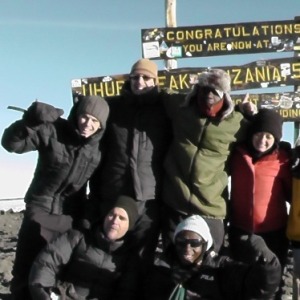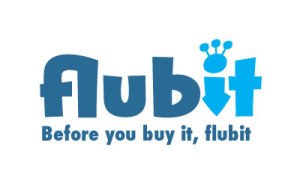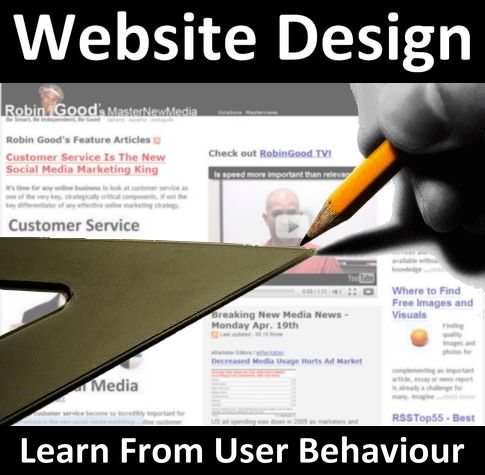 The Digital Strategies for Heritage 2011 conference (DISH 2011) was a new name to me until quite recently.
The Digital Strategies for Heritage 2011 conference (DISH 2011) was a new name to me until quite recently.
This could be explained by the fact that my job is all about helping aspiring entrepreneurs with their information needs, rather than digitising parts of the enormous British Library collection.
However, one of the four strands of DISH 2011, held from 7 December in Rotterdam, was Business for Heritage, and I was asked to speak at session on Organisations that Redesigned their Business Models.
I certainly believe the Business & IP Centre is an excellent example of how a library can deliver a different kind of service, to support its community and economy. As well as giving a talk about the development of the Centre and the services we deliver, I was also asked to offer myself up as a trained business advisor.
Quite a few conference attendees applied for these one to one advice sessions, and I selected four I felt I could help the most. It was fascinating to hear first hand about some of the projects my clients were undertaking, and the challenges they were facing. In most cases it involved persuading staff with somewhat traditional and cautious attitudes to adopt new technologies and new ways of working. These were issues we had faced in developing the Business & IP Centre.
Overall I found the conference to be extremely well organised with fascinating speakers and interesting and engaged attendees. I would thoroughly recommend attending any future DISH conferences.
Here are my notes from the two days of the event:
I got off to an excellent start when I found myself sitting next to the conference chair Chris Batt and his charming wife Adie, who also happens to be his business partner, on the flight out to Schiphol airport. So I was able to get the inside track even before arriving in Rotterdam.
Chris has been a key figure in the information world for many years including Chief Executive of the Museums, Libraries and Archives Council (MLA). However, this was the first time I had had the opportunity to speak to him.
 Wednesday 7th December – Introduction from Chris Batt, Conference Chair
Wednesday 7th December – Introduction from Chris Batt, Conference Chair
DISH has now seven years experience, and aims to be a toolbox with practical solutions, rather than just keep on saying it is a ‘good thing’.
The four themes for the conference are:
- Business for heritage
- Crowdsourcing and co-creation
- Institutional change
- Building a New Public Space

We are living in a time of uncertainty, complexity and change, but more than ever a need for us to think strategically.
In the private sector it is a case of ‘a thousand flowers blooming’, but each one is aiming for market domination. And how can you tell which will be the success story?
We are moving from Evolution to Revolution (look at the recent changes in the music industry), also in some cases Extinction.
There are big differences between the public and private sectors, but both are serving the same customers.
In the public sector how does the weeding of the ‘thousand flowers’ take place, when there isn’t the private sector market control elements.
Do we undertake cost benefit analysis for our digitisation projects?
When looking at the UK government departmental strategies and cooperation, it is a case of ‘the whole being less than the sum of the parts’.
Chris asked the audience what ‘being ahead of the wave’ meant to them.
Is it the Institution, the Project, the Sector, or Public knowledge institutions?
To make progress we need to move from being technicians to strategists, and from an institutional focus to a consumer focus.
 Living the Digital Shift – Katherine Watson – Director, European Cultural Foundation
Living the Digital Shift – Katherine Watson – Director, European Cultural Foundation
- We need to start with the person not with the technical tool.
- We should look into the future, and ask ourselves how will the current six year old in school be wanting to use your services when they are ready?
- Looking to the past is not helpful.
- The economic crisis means that our funding landscape is crumbling around us.
- In the future it will not be ‘back to business as normal’.
- Rapid change means that it is not possible to predict the future with risk free certainty.
 Cyborg anthropology and the future of interfaces – Amber Case
Cyborg anthropology and the future of interfaces – Amber Case
Although something of a surprising presence at a conference on digital strategies, Amber’s talk was absolutely fascinating, and I am still pondering on the implications of what she said. You can catch some of the same points in her TED Women talk.
The traditional tools that humans use have changed very little over thousands of years. Whereas computers have changed beyond recognition in less than 50 years.
The idea of Cyborg Anthropology first came about in 1941, when a group of scientists and technologists first met to review impact of computer technology on people. In 1992 it became a formal academic subject.
Becoming a cyborg
When you first go online, you have to start making decisions about how you will present your virtual self, and how closely related this will be to your ‘real’ self. You are likely to adjust this version of you based on feedback from your contacts.
The future
- We will see more Calm Technology, which appears when you need it, and disappears when you don’t.
- Technologists try to digitise old technology and nearly always fail. For example trying to ‘grab’ a virtual page and turn it, instead of pressing a button.
- We need to have technologies which give us superhuman powers, eg Flipboard
- There will be an increasing merging of tech with real life. E.g. body implants.
- Real-time gaming eg MapAttack
- Home automation that actually works.
- The interface will begin to disappear, so that actions are reduced, queries are eliminated. E.g. Kinect for Xbox®
- The best technology is invisible… like a book.
Q&A
Q. How do you cope with the way technology negatively impacts available time and the ability to concentrate?
A. Amber recommended moderation in all things includes technology. She recently took 3 weeks away from her email and social media to read a book a day. The government in Singapore has proposed its citizens should turn off technology an hour before bed-time to give their brains time to settle down so their sleep is effective.
 Culture and Social Media – Charles Leadbetter
Culture and Social Media – Charles Leadbetter
The answer lies in ‘creative muddling through’, using skill-full incompleteness.
Charles used an excellent analogy of the development of the wine industry over the last 50 years to illustrate different models of customer service that relate to the Cultural Heritage sector.
French wine is elitist, their bottles (with just a front label) give almost no clue to an amateur wine drinker as to the nature of the wine they will find inside. You need to know their language, geography, horticulture and coding systems.
The message is, ‘keep away, unless you know what you are dealing with’.
In contrast Australian wines are consumer friendly. They have colourful modern labels on the front and lots of helpful information on the back, explaining the grapes that make up the contents, and what the wine will smell and taste like. They a have a handy screw top, so you don’t even need to drink the whole bottle in one go.
The message is, ‘I go very well with your Chicken Korma’.
Because of these changes New World wines are now the largest selling in the world.
Then there is the rapidly expanding area of home made wine. People are planting their own garden vineyards and buying the wine making kit from the web. Needless to say the quality of wine produced ranges from the undrinkable to excellent.
The message here is, ‘anyone can have a go’.
Next Charles looked at four distribution models and the challenges they present for the cultural sector.
1. How we communicate
2. Where ideas come from.
Compare this to what he called the evil genius of Simon Cowel managed to operate in three out of four sectors.
He was particularly impressed by how Apple have been so successful, by creating a ‘guild’ of followers (customers) who believe their Apple products are helping them to live better, more modern lives.
3. How has society changed?
In the future to grow big with small investment will require seeing yourself as a movement, or networks with values and ideologies, not institutions, with opening hours, collections and catalogues. Social media and the web gives an opportunity to do this.
He gave the example of Barcelona football club as the kind of organisation which exemplifies this approach.
The English, who invented football, developed a game in which defenders never went beyond the half-way line. They repelled attacks with physicality and generally ‘booted’ the ball up the pitch to their attackers who had the skill to put the ball in to their opponents net.
The ball only ever went straight up and down the pitch. The occasional creative player would attempt to move the ball across the pitch instead.
However, Barcelona developed ‘total football’, where everyone is a key player with skill. The ball always moves across the pitch, never along it, the team aim is to never lose possession, and everyone has to contribute.
This has made them into the most successful football team in the world.
For Charles cultural institutions must learn that the way to win is, not to be brilliant and individualistic, but to remain part of the network, to pass, to constantly move, look for space and find interesting angles, to always remain linked. If you are not open to people passing the ‘ball’ to you, no one will be interested in playing with you.
In other words, play culture, like Barcelona play football.
Thursday 8 December
 Come let us go boldly into the Future – Michael Edson
Come let us go boldly into the Future – Michael Edson
Michael gave the closing keynote talk, which was more a call to arms than an academic treatise.
He spent some time talking about future predictions from the last 50 years. He pointed out that even those ideas we think of as new, such as The Long Tail, Joy’s Law, Cognitive Surplus, Network Effects, Moores’s Law & Mobile, and Every user a Hero are no longer really new.
He built towards his message that the ‘future is now’. So we should stop worrying about what may or may not be coming down the wire, and start engaging with our present future.
He summed up with three key questions we should all be asking ourselves:
1. What world am I living in?
2. What impact do I want to have?
3. What should I do today?
He also strongly recommended The Myths of Innovation by Scott Berkun.
I have been attending keynote talks at library and information conferences for over 20 years now, and in all that time I have only seen two genuinely evangelical speakers from an information background.
The first was Eugenie Prime at SLA Conference in Seattle in 1997, when she called on all librarians to quit whining about image and begin walking the walk. And to earn respect by forgetting about our negative image and doing our jobs better than anyone else could.
Michael Edson qualifies as the second. The audience left his session inspired to tackle this particular professional challenge. No more whinging about all the problems we face, but to focus on the solutions.
You can watch his talk on Vimeo.


















 First up was Fraser Docherty of Superjam. Fraser proved to be a very engaging and funny speaker. He told us how he started making jam, based on his grandmother’s recipes when he was fourteen, selling it door to door and at farmers markets before securing a deal with Waitrose. Social media and blogging provided him with a cheap and easy way to publicise his brand and communicate with his customers.
First up was Fraser Docherty of Superjam. Fraser proved to be a very engaging and funny speaker. He told us how he started making jam, based on his grandmother’s recipes when he was fourteen, selling it door to door and at farmers markets before securing a deal with Waitrose. Social media and blogging provided him with a cheap and easy way to publicise his brand and communicate with his customers. The next speaker was Ian Hogarth who set up the website Songkick.com, which allows members of the public to match their music interests to the site and then receive alerts when their favourite bands are playing. The site uses a “robot” which scours the Internet for concert and gig information.
The next speaker was Ian Hogarth who set up the website Songkick.com, which allows members of the public to match their music interests to the site and then receive alerts when their favourite bands are playing. The site uses a “robot” which scours the Internet for concert and gig information. Next up was the BBC’s technology correspondent Rory Cellan-Jones. Rory has witnessed first hand how social media, especially Twitter, has revolutionised news reporting. He used an example of the earthquake in Qinghai province in China last year which was reported on Twitter before it appeared on any other news media.
Next up was the BBC’s technology correspondent Rory Cellan-Jones. Rory has witnessed first hand how social media, especially Twitter, has revolutionised news reporting. He used an example of the earthquake in Qinghai province in China last year which was reported on Twitter before it appeared on any other news media. The last speaker was Justine Roberts from Mumsnet, the massively popular website for mums (and the occasional dad) with a phenomenal 1.2 million visitors each month.
The last speaker was Justine Roberts from Mumsnet, the massively popular website for mums (and the occasional dad) with a phenomenal 1.2 million visitors each month.

 I am currently working with my SLA Europe colleagues to build a shiny new website for our association so these tips are timely.
I am currently working with my SLA Europe colleagues to build a shiny new website for our association so these tips are timely.